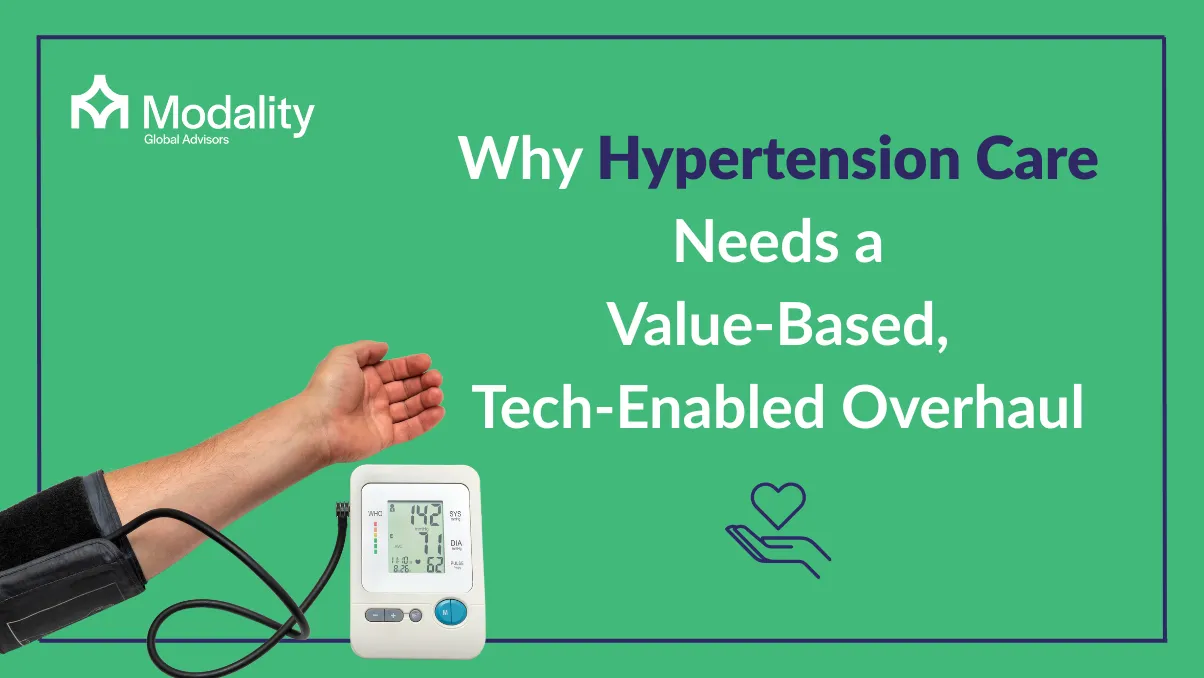Why Hypertension Care Needs a Value-Based, Tech-Enabled Overhaul
Hypertension is no longer a quiet threat lurking in the background, it’s a full-blown global crisis. With over 1 in 3 adults worldwide affected (WHO) and only 1 in 4 Americans keeping it under control (CDC), high blood pressure remains a major driver of heart attacks, strokes, and kidney disease. Yet most health systems are still responding with outdated, fragmented, and reactive care.
It's time to flip the script. Value-based care models powered by smart technology offer the promise of proactive, personalized, and cost-effective solutions. The future of hypertension care is not in managing emergencies rather it’s in preventing them entirely.
The High Cost of Inaction
Uncontrolled hypertension costs the U.S. alone over $130 billion annually, while globally, it contributes to 10+ million deaths each year. Most healthcare systems still rely on traditional models where care is delivered after a red flag is highlighted.
This outdated model leads to:
- Delayed diagnoses and underreporting
- Overcrowded emergency departments
- Disconnected care between primary physicians, specialists, and lifestyle support
- Avoiding key environmental and societal risk factors
Why a Value-Based Overhaul Is Essential
In a value-based care (VBC) model, quality trumps quantity. Providers are rewarded for keeping blood pressure under control, not just prescribing medication.
A tech-enabled, VBC strategy includes:
- Risk stratification to flag high-risk patients early
- Integrated care teams coordinating across primary care, cardiology, and wellness
- Patient engagement tools to promote adherence and education
- Outcome-based metrics tied to reimbursement and quality benchmarks
Studies have shown that when implemented properly, VBC models can reduce hospitalizations, improve medication adherence, and significantly cut costs.
Technology: The Game Changer
Digital health isn’t a luxury, but it’s a necessity in the current healthcare environment. A tech-enabled strategy makes hypertension care continuous and personalized instead of episodic and one-size-fits-all.
Here’s how:
- Remote Patient Monitoring (RPM): Smart cuffs and wearables provide real-time blood pressure tracking.
- Predictive Analytics: AI models can flag patients likely to experience a hypertensive crisis before it happens.
- Digital Coaching & Telehealth: Helps patients adhere to diet, medication, and exercise plans with minimal disruption.
- Custom Dashboards: Enable clinicians to make data-informed decisions fast.
Various studies have shown that these tools can improve blood pressure control by up to 72%.
How Modality Global Advisors is Driving Smarter Hypertension Care
At Modality Global Advisors, we're not just following healthcare trends, we're setting them. We help healthcare organizations, ACOs, FQHCs, and provider networks transform hypertension care from reactive to preventive.
What we bring to the table:
- Custom VBC program design tailored for hypertension
- Predictive analytics integration to identify high-risk populations
- Remote care solutions that encompass care settings
- Educational outreach during awareness months and beyond
- Strategic partnerships with tech innovators to embed smart tools into care delivery
- Policy advisory services to promote RPM-friendly reimbursement models
From Crisis Control to Condition Control
Hypertension shouldn’t be a surprise diagnosis or a silent killer—it should be a manageable, monitored, and minimized chronic condition. With value-based incentives, AI-powered tools, and patient-centered planning, we can rewrite the story of blood pressure management.
And at Modality Global Advisors, we are proud to be helping healthcare leaders do just that strategically, sustainably, and successfully.
Explore how our Value-Based Care Services can future-proof hypertension management.

